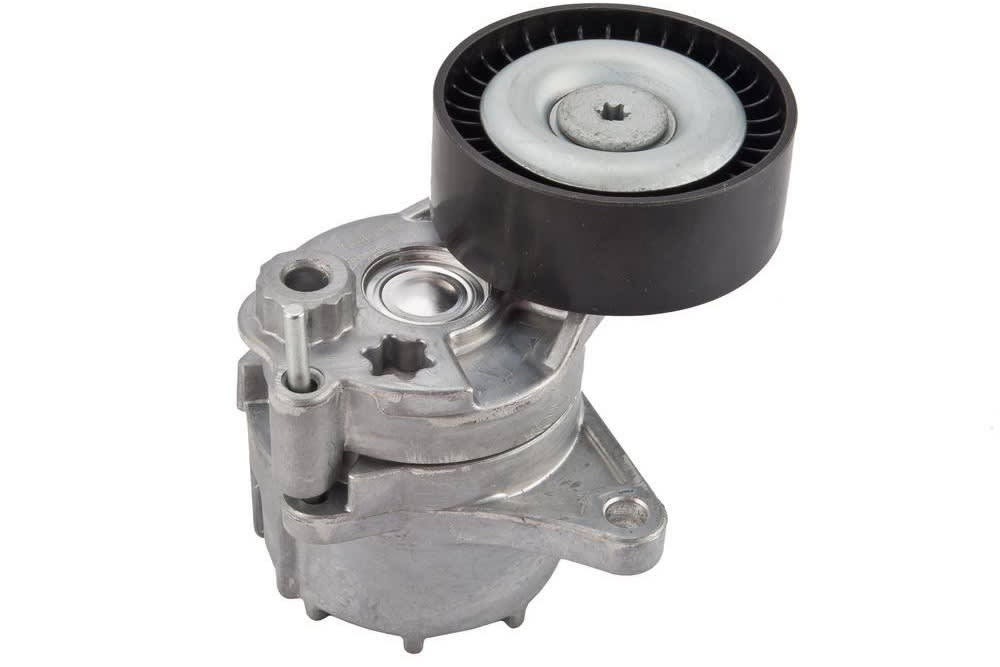
A belt tensioner typically lasts around 60,000 to 100,000 miles before needing replacement. Signs of wear include noise and belt performance issues.
Belt tensioners are essential components in a vehicle’s engine system, responsible for maintaining the proper tension of belts that drive various engine accessories. Over time, the tensioner can wear out due to usage, leading to potential problems such as squealing noises or belt slippage.
Understanding the lifespan of a belt tensioner and recognizing warning signs of a failing tensioner can help prevent more severe damage to the engine. Regular maintenance checks and timely replacement of the belt tensioner can ensure the smooth operation and longevity of your vehicle’s engine system.
Navigate As You Want: [show]
Signs Of A Bad Belt Tensioner
Signs of a Bad Belt Tensioner: A bad belt tensioner can exhibit several signs that indicate it needs replacement. One common sign is a squealing noise coming from the engine area, which may indicate that the tensioner pulley is not providing enough tension on the belt. Another indication of a failing tensioner is a worn drive belt, which can result from the tensioner not maintaining proper tension. Additionally, oil leaking from the hydraulic tensioner can signal a malfunctioning tensioner that needs to be inspected and possibly replaced.
Understanding Belt Tensioners
Belt Tensioner: A crucial engine component that maintains proper tension on belts.
Components: Consist of a pulley, spring, and arm to prevent belt slippage.
Types: Common types include spring-loaded and hydraulic belt tensioners.
How To Diagnose And Test A Belt Tensioner
To diagnose and test a belt tensioner, start by listening for squealing or rattling noises coming from the timing cover area. Additionally, check for oil leakage from the hydraulic tensioner. You can also test the tensioner by removing the bottom splash shield and using a torque wrench to measure the tension.
Overall, the lifespan of a belt tensioner can vary, but it is recommended to replace it when signs of wear and tear, such as noise or loose belts, occur.
| Locating a spring-loaded belt tensioner: Look for the tensioner near the engine that is spring-loaded. |
| Symptoms of a bad belt tensioner: Listen for squealing noise, check for oil leaks, and observe a worn drive belt. |
| Testing the belt tensioner: Use a torque wrench to test the tension and check the operation by removing the splash shield. |
| Replacing the tensioner: Consider replacing it when there are signs of noise or drivability issues. |

Credit: www.porschewestlake.com
How Often Should A Belt Tensioner Be Replaced?
It is crucial to understand the life expectancy of a tensioner bearing as it largely influences the replacement frequency. Factors such as the quality of the tensioner, driving conditions, and maintenance routine play a pivotal role in determining when a belt tensioner should be replaced. A lower quality tensioner, frequent off-road driving, and lack of regular maintenance can considerably shorten the life span. Conducting regular inspections and following the manufacturer’s recommendations is imperative to ensure the optimal functioning of the belt tensioner, as it directly impacts the overall performance of the vehicle.
Tips For Maintaining Belt Tensioners
Proper belt tension adjustment is crucial for the longevity of belt tensioners. It is important to regularly visually inspect the tensioner for any signs of wear or damage. If the tensioner is worn out or making squealing noises, it may be time for a replacement. When replacing the tensioner, it is also recommended to replace other components such as the drive belt and idler pulleys to ensure optimal performance. Regular maintenance and timely replacement of worn-out parts can extend the life of belt tensioners and prevent any potential issues down the line.

Credit: www.thompsonsales.com

Credit: www.cornerstoneford.com
Frequently Asked Questions On How Long Does Belt Tensioner Last
How Often Should The Belt Tensioner Be Replaced?
The belt tensioner should be replaced every 60,000 to 100,000 miles as part of regular maintenance.
What Is The Life Expectancy Of A Tensioner Bearing?
The life expectancy of a tensioner bearing can vary. Regular inspection and maintenance can prolong its lifespan.
What Are The Symptoms Of A Worn Out Tensioner?
Symptoms of a worn out tensioner include squealing or rattling noise from the timing cover area. Loose timing belt can cause drivability issues, especially under high load or high rpm.
How Do I Know If I Need A New Belt Tensioner?
If you hear a squealing noise or notice a worn drive belt, or oil leaking from the tensioner, you may need a new belt tensioner. Inspecting and testing the tensioner could help determine if it needs replacement. Regular maintenance can ensure the longevity of your belt tensioner.
Conclusion
The lifespan of a belt tensioner can vary based on different factors. Regular maintenance and timely replacement can significantly extend its life. It’s important to keep an eye on symptoms of a failing tensioner and address them promptly to avoid potential vehicle issues.
Understanding the signs and periodically inspecting the tensioner can prolong its longevity.



